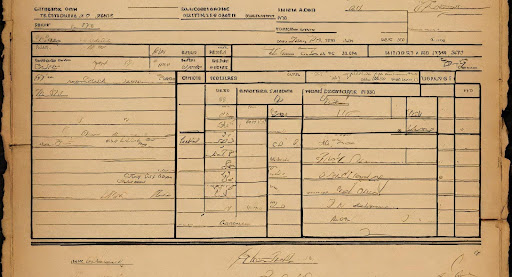Medical billing, a critical component of the healthcare ecosystem, has undergone a remarkable transformation over the years. The shift from traditional paper-based billing systems to electronic methods has not only streamline processes but has also significantly enhance efficiency, accuracy, and overall patient care. We will explore the evolution of medical billing From paper to electronic systems, highlighting the key milestones and benefits of transitioning from paper to electronic systems.

I. The Genesis of Medical Billing
A. Historical Overview
- The origins of manual billing in healthcare
- Challenges associated with paper-based billing systems
B. The Need for Change
- Growing complexities in healthcare procedures
- Increasing patient volumes and administrative burdens
II. The Emergence of Electronic Medical Billing
A. Early Innovations
- Introduction of early electronic billing concepts
- Initial resistance and concerns from healthcare providers
B. Regulatory Influences
- HIPAA and its impact on electronic transactions in healthcare
- Standardization efforts to improve interoperability
III. Advantages of Electronic Medical Billing

A. Enhanced Accuracy
- Reduction of human errors in data entry
- Prevention of billing and coding mistakes
B. Improved Efficiency
- Expedited claims processing and reimbursement
- Automation of repetitive tasks for administrative staff
C. Cost Savings
- Reduction in paper and postage expenses
- Streamlined workflows leading to increased productivity
D. Accessibility and Security
- Secure transmission of patient data
- Accessibility of information from anywhere, at any time
IV. Key Technological Components
A. Electronic Health Records (EHR)
- Integration of billing with patient health information
- Real-time access to patient records for accurate billing
B. Practice Management Software
- Centralized systems for scheduling, billing, and reporting
- Integration with other healthcare software solutions
C. Health Information Exchange (HIE)
- Facilitating the secure sharing of patient information
- Improving communication between different healthcare entities
V. Challenges and Solutions in Transition
A. Implementation Hurdles
- Resistance from healthcare professionals
- Training and education for staff on new systems
B. Data Security Concerns
- Addressing privacy and security issues in electronic billing
- Implementing robust cybersecurity measures
C. Interoperability Challenges
- Ensuring seamless communication between different systems
- Industry efforts to establish common standards
VI. Future Trends and Innovations
A. Artificial Intelligence in Medical Billing
- Automation of complex billing processes
- Predictive analytics for claims processing and reimbursement
B. Blockchain Technology
- Ensuring transparency and security in billing transactions
- Potential for decentralized healthcare systems
C. Patient Involvement
- Empowering patients in the billing process
- Technologies facilitating patient-friendly billing experiences
VII. Case Studies
A. Successful Implementations
- Hospitals and healthcare systems that have successfully transitioned
- Demonstrated improvements in efficiency, accuracy, and patient care
B. Lessons Learned from Challenges
- Instances where challenges were overcome with innovative solutions
- The impact of lessons learned on the broader healthcare community
Before the Digital Age:

Medical billing, an essential component of healthcare administration, has undergone a remarkable transformation over the years. Prior to the advent of electronic systems, the process was vastly different, relying heavily on manual methods and paperwork. Transitioning to the challenges and intricacies of medical billing before the digital revolution, we will shed light on the evolution that has brought us to the efficient electronic systems we have today.
Manual Paperwork:
In the pre-digital era, medical billing was a labor-intensive task that revolved around mountains of paperwork. Healthcare providers, administrators, and billing professionals were immersed in a sea of handwritten notes, patient records, and intricate billing forms.
Limited Efficiency and Accuracy:
The manual nature of billing before electronic systems often led to inefficiencies and inaccuracies. Billing codes and claims were prone to human error, resulting in delays in processing and reimbursement .The lack of standardized coding systems further complicated the billing landscape, making it challenging to streamline processes and ensure consistency across the healthcare industry. Transitioning from this era of non-standardization, we delve into the subsequent developments that have paved the way for a more cohesive and efficient coding framework in today’s modernized healthcare environment
Communication Challenges:

Before electronic systems, communication between healthcare providers, insurance companies, and patients relied heavily on traditional methods such as postal mail and phone calls. This manual communication process often led to misunderstandings, lost documents, and a lack of real-time updates on the status of claims. Consequently, resolving billing issues and clarifying discrepancies were time-consuming and resource-intensive.
Transition to Electronic Systems:
The advent of electronic health records (EHRs) and billing systems revolutionized the healthcare industry. The transition to digital platforms brought about increased efficiency, reduced errors, and improved communication. Standardized coding systems, such as the Current Procedural Terminology (CPT) and International Classification of Diseases (ICD), enhanced the accuracy and consistency of medical billing.
Streamlined Processes and Faster Payments:
Electronic medical billing systems automate many aspects of the billing process, significantly reducing the time required for claim submission, processing, and reimbursement. The integration of electronic claims submission allowed for faster communication between healthcare providers and insurance companies, leading to expedited payments and improved cash flow for medical facilities.
Conclusion:
The evolution of medical billing from paper to electronic systems represents a significant advancement in healthcare administration. Furthermore, Challenges were encountered during the transition, the benefits in terms of accuracy, efficiency, and cost savings are undeniable. As technology continues to advance, the future holds even more promise with the integration of artificial intelligence, blockchain, and increased patient involvement. The journey from paper to electronic medical billing is a testament to the healthcare industry’s commitment to improving patient care through innovative and efficient practices.
Recent Comments